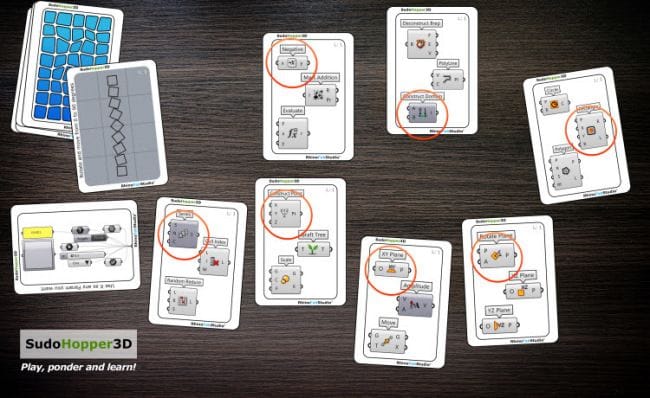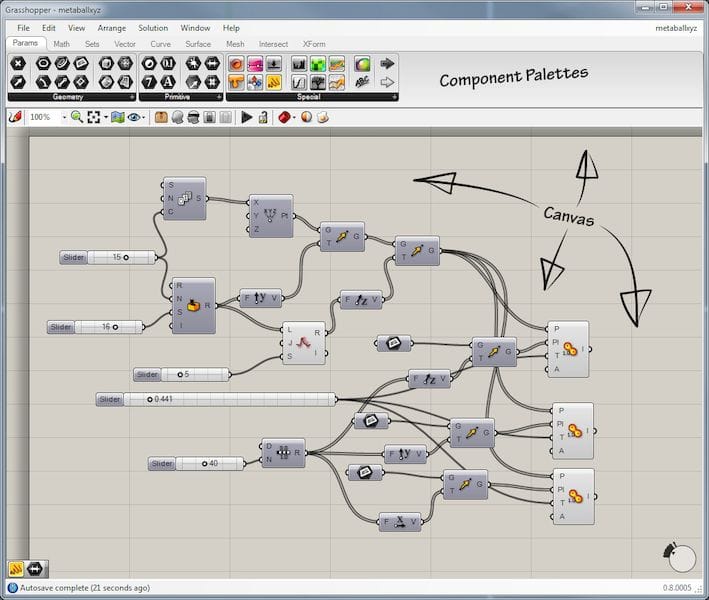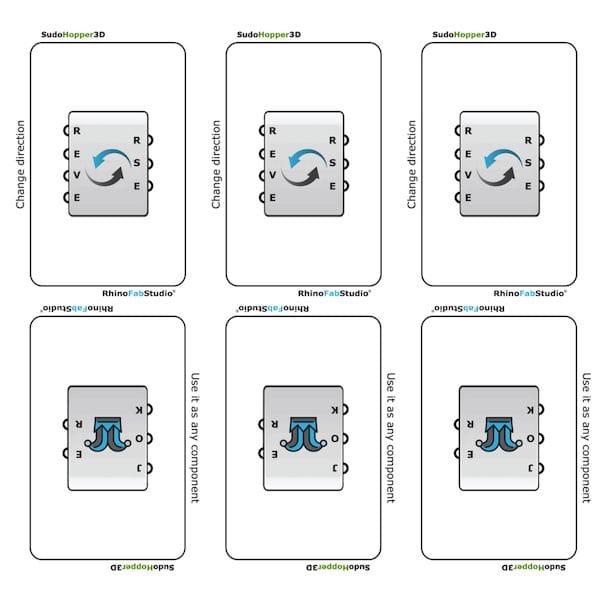
Grasshopper is one of the most powerful tools in the arsenal of 3D modeling software, but it can be tricky to learn.
The tool is actually an add-on to the popular Rhinoceros 3D modeling tool from McNeel, used by thousands worldwide for its excellent NURBS capabilities. You can design many things with “Rhino”.
But Grasshopper is a bit different. It is a method for generating 3D models, rather than explicitly building them, piece by piece as is done in virtually all other 3D modeling tools. It uses mathematics and geometry in programming like steps to develop a 3D configuration, often far more complex than could ever be attempted by hand.

As such it’s often used to create fantastic organically-inspired 3D prints that seem like something from the future. They can also be highly functional by lowering weight, increasing strength where required or other aspects.
Grasshopper works by having the designer set up a kind of workflow, shown at top, where calculations take place step by step and relay their results to the next processing stage.
Building these Grasshopper networks is not obvious, however, as there is no obvious mental image of your steps as you’d have when using other systems. If you are placing a block, or twisting a cylinder, you “know” what is to happen. With a programmatic interface such as Grasshopper’s, it’s a lot less obvious unless you are a mathematician.
The key to Grasshopper is to think in a slightly different way, and now there appears to be a training tool that can help you get there: SudoHopper3D.
It’s a card game that simulates the thinking you would require if using Grasshopper. They explain:
To help in learning Grasshopper, we have created SudoHopper3D, a card game to improve the overall understanding of parametric thinking. SudoHopper3D playfully takes you on a journey through mathematics, algorithms and basic coding. Players surprisingly learn concepts such as vector geometry and trigonometry.
SudoHopper3D advantages do not stop at simple math skills. Besides the unique math portion of the game, players also learn problem-solving, logic, and sequential reasoning in a socially interrelated and entertaining environment.
It’s possible to buy a set of SudoHopper3D cards here, but you can also download a free PDF of the cards for production yourself here.

Of course, a set of cards does not a game make. You will need the rules, which you can find here. Essentially it teaches you how to create definitions and complete them validly, which is precisely what is done in Grasshopper itself.
I believe this is a very unique and interesting way to get people (especially students) interested in the Grasshopper technique. With their experience using the game, they could find learning Grasshopper itself far easier, and this could lead to more people being able to produce fantastical 3D designs using the tool. That’s a good thing!

